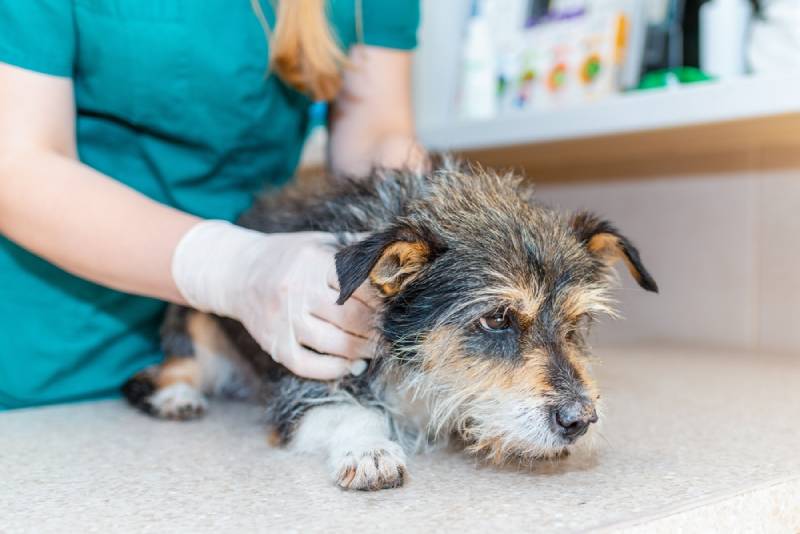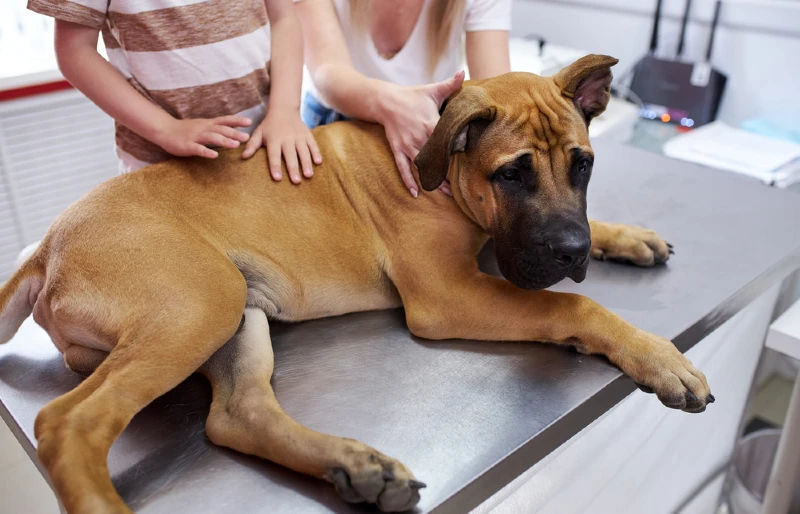7 Most Common Cat Eye Problems: Our Vet Answers
By Dr. Kim Podlecki, DVM (Vet)
Updated on
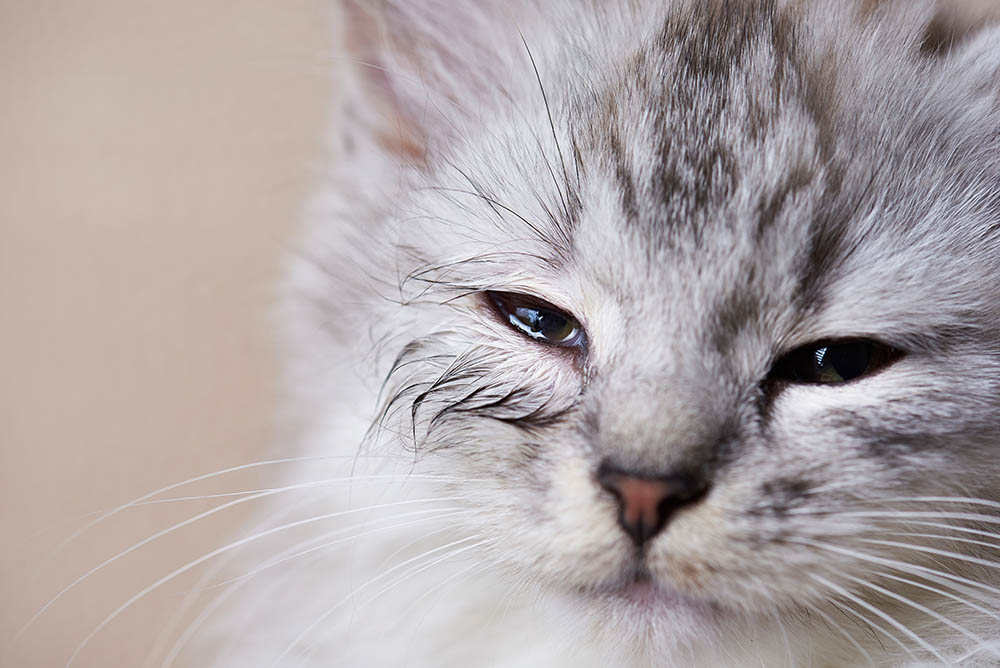
It’s Saturday night, and your veterinarian isn’t open until Monday morning. But your cat is squinting one of their eyes. It has a filmy look to it, the white appears red, and your cat is pawing at the eye as if irritated.
What could be the cause of your cats’ eye irritation? Should you be concerned enough to go to the closest veterinary emergency room? Is there anything that you can do at home?
Continue reading to learn more about the most common cat eye problems.
The 7 Most Common Cat Eye Problems:
1. Corneal Ulcers
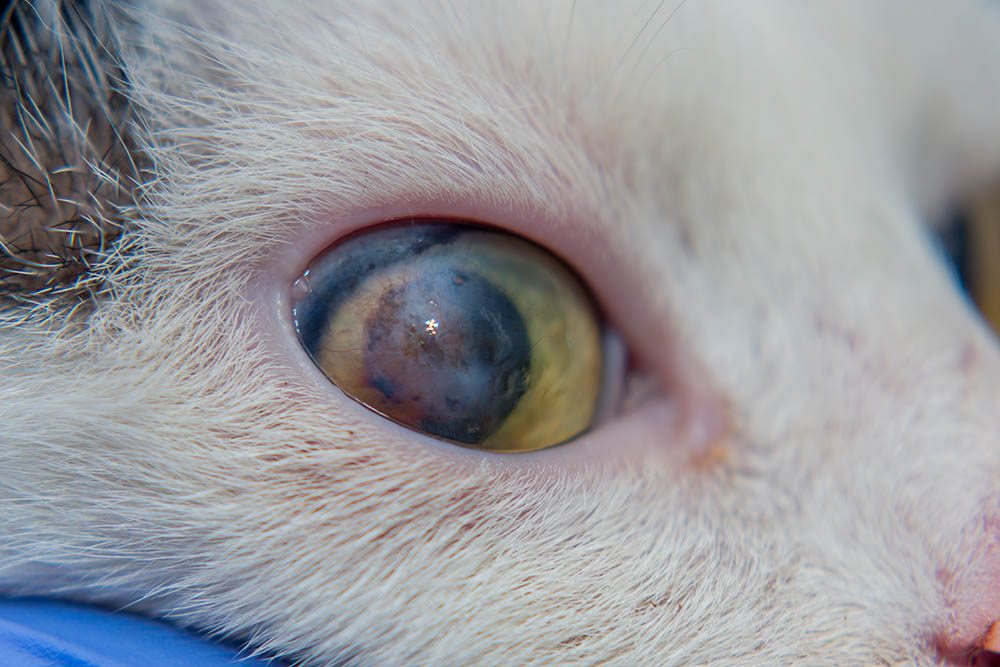
What It Is: The cornea is the clear, protective surface of the eyeball. It helps protect the eye from trauma and aids in the amount of light that is allowed to enter the eye, which is related to focused vision.
A corneal ulcer is when there is trauma to the surface of the cornea, or the epithelium (outer layer). This is most commonly caused by another animal scratching the cornea, or your cat getting some type of debris in the eye and rubbing it over the cornea. This can also occur from recurrent flare-ups of feline herpes virus and abnormally shaped eyelids/eyelashes.
Treatment: Your veterinarian will likely prescribe antibiotic eye drops or ointment to help the eye heal. It’s important you get these medications from your veterinarian, as there are some medications used for other species that can be toxic in cat eyes. Uncomplicated ulcers should be healed within a week.
It’s important that your cat is seen as soon as possible so the corneal ulcer does not become progressively worse. If an ulcer is left untreated or doesn’t heal or if the eye worsens, it may sometimes require surgery. The worst-case scenario is the ulcer continues to penetrate inward, and the globe or eyeball can actually rupture.
2. Conjunctivitis
What It Is: The conjunctiva is the pink tissue that you can see outlining your cat’s eyes. It’s considered a mucous membrane, which helps protect and moisten the eyeball and cornea. Conjunctivitis is inflammation of this tissue, typically caused by debris and/or other irritants, viruses (most commonly feline herpes virus, calicivirus, and FIV), and bacteria. The conjunctiva will appear swollen and dark pink, and you may notice your cat squinting or having discharge from the eye(s).
Treatment: Sometimes, no treatment is needed at all. Simple cases of conjunctivitis and/or viral flare-ups may self-resolve if your cat is otherwise healthy. Other times, your cat may need drops and/or ointments for the eye if they are in pain, have significant discharge, or are not improving. If you think your cat has conjunctivitis, contact your veterinarian so they can best advise you on what to monitor for and when to come in for an exam.
3. Keratoconjunctivitis
What It Is: Keratitis is inflammation of the cornea, and conjunctivitis is inflammation of the conjunctiva. Therefore, keratoconjunctivitis is inflammation of the cornea and conjunctiva. As with many of the other conditions, your cat may be squinting and have redness to the whites of the eyes, swollen red conjunctiva, cloudiness to the cornea, and increased tearing. Sometimes, the cause of this condition is related to feline herpesvirus, yet other times, no cause can be found.
Treatment: Treatment is aimed at controlling inflammation, pain, and discomfort. This may be done with drops, ointments, oral medications, and antivirals. Your veterinarian will develop a plan to keep your cat comfortable, as they may suffer from flare-ups throughout their life. As with conjunctivitis, contact your veterinarian so they can advise you on when to come in. They may even have you send a picture to them to help assess the situation.
4. Uveitis
What It Is: Uveitis refers to inflammation of the uvea, which is the middle portion of the eye. Most commonly, when the term uveitis is used, it refers to anterior uveitis, which is inflammation of the front portion of the eye, the layer just behind the cornea.
Cats affected with uveitis may be squinting, the whites of their eyes may appear red, they may be pawing at their affected eye(s) that may also have increased tearing. This condition is very irritating and painful. Uveitis is most commonly caused by FeLV, FIV, FIP, and other infectious diseases.
Treatment: This is imperative because otherwise, your cat may develop cataracts, glaucoma, and/or blindness. Treatment is aimed at both making the affected eye less inflamed and uncomfortable and treating the underlying systemic disease that caused it. Uveitis should be treated as an emergency, and your cat should be seen by a veterinarian if it’s suspected.
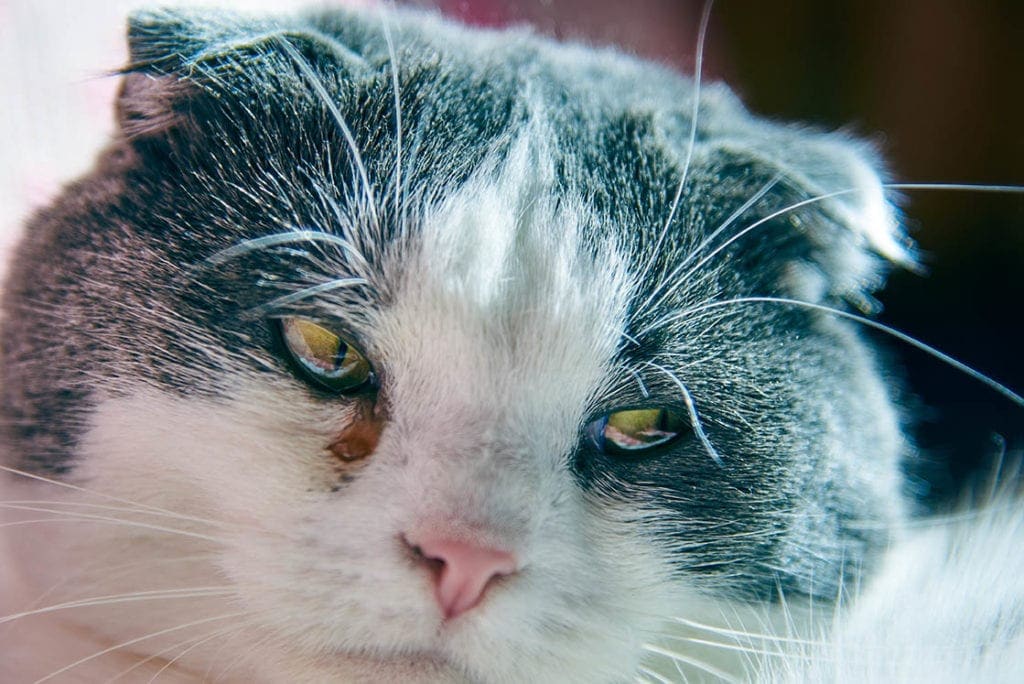
5. Glaucoma
What It Is: Glaucoma is an elevated pressure of the eye(s). This will cause your cat’s eye to slightly bulge out, become hard to the touch, and can be very painful. Glaucoma can be secondary to other conditions, such as cataracts, uveitis, or more rarely, an inherited condition.
Treatment: Depending on how elevated the pressure is within the eye, your veterinarian may prescribe drops and oral medications to help decrease the pressure. However, glaucoma is not a curable condition. If the pressure continues to elevate and can’t be controlled and/or your cat is in severe pain, removal of the affected eye(s) via surgery may be needed.
6. Cataracts
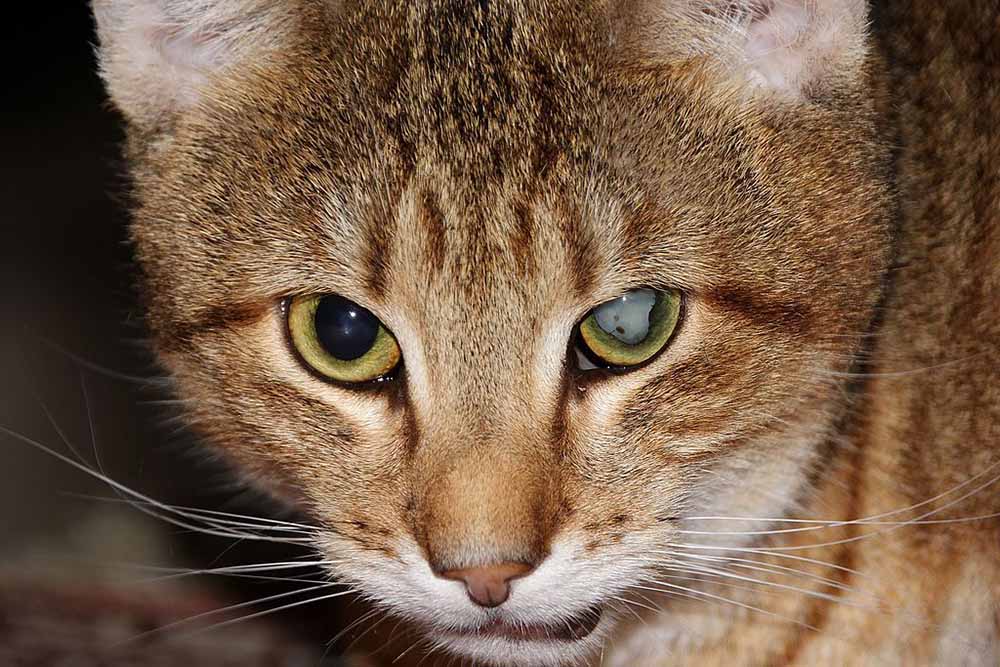
What It Is: The lens is inside the globe of the eye and helps to focus light toward the back of the eye to produce vision. A cataract is a cloudy or completely opaque lens that can no longer appropriately focus incoming light. Sometimes, just a portion of the lens becomes cloudy, while other times, it’s the entire lens.
Depending on the severity and extent of the cataract, vision may just be blurry for some cats, while other cats may become completely blind from it. One or both eyes can be affected. Abnormalities include a cloudiness or white discoloration to the lens of the eye(s).
Treatment: Treatment depends on how severely the vision is affected, and how your cat reacts to decreased vision. Some cats will do fine with partial or even complete blindness. Other cats will not adjust well and surgery may be recommended.
7. Corneal Sequestrum
What It Is: A corneal sequestrum will appear as a black spot or area on the cornea. This black spot is actually a piece of dead corneal tissue. You may notice your cat squinting and pawing at their affected eye(s), which could be tearing up, and they might be acting like they’re in pain. Unfortunately, the cause of a sequestrum is not always known, though some ophthalmologists have found an association between feline herpesvirus and upper respiratory infections.
Treatment: Surgical removal is the only way to get rid of a sequestrum. Since this is a very sensitive and specialized surgery, regular veterinarians may not perform this. If your cat has a sequestrum, you may need to see a board-certified veterinary ophthalmologist for surgery and care.
Conclusion
Multiple different eye problems can have similar clinical signs. That said, your cat will often seem to be in pain, be squinting or pawing at their eye, and have increased tearing or redness to the eye.
In general, most eye problems should be seen by a veterinarian as soon as possible. If your cat is running around and acting normally, you can contact your veterinarian as soon as they open to set up an appointment. However, if your cat is unable to open their eye(s), the eye seems painful, or your cat is howling and pawing and otherwise seems uncomfortable, you should take them to your nearest emergency veterinarian.
See Also:
Featured Image Credit: PixieMe, Shutterstock




